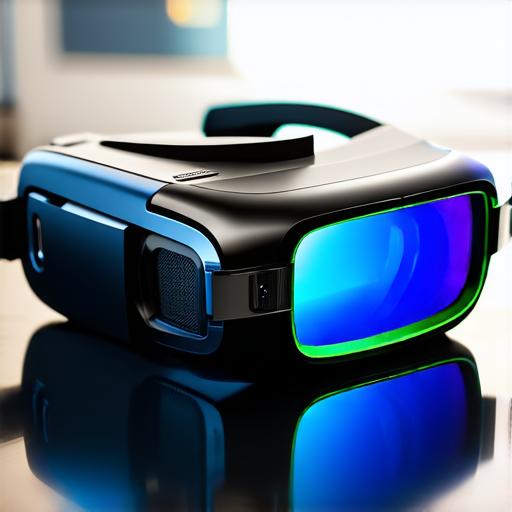Introduction: The Rise of Virtual and Augmented Reality
Virtual reality (VR) and augmented reality (AR) are two rapidly growing technologies that have captured the imagination of people around the world. Both VR and AR technologies use computer-generated imagery to create immersive experiences for users.
What is Virtual Reality?
Virtual reality is a technology that creates a simulated environment in which users can interact with objects and other people as if they were real. VR systems typically consist of a headset, controllers, and sensors that track the user’s movements. The headset displays high-resolution images that create the illusion of being in a three-dimensional space.
What is Augmented Reality?
Augmented reality, on the other hand, is a technology that overlays digital information onto the real world. AR systems use cameras and sensors to track the user’s position and orientation, and then superimpose digital objects and information onto the real world. This creates an interactive experience in which users can see and interact with virtual objects in their physical environment.
Differences between Virtual Reality and Augmented Reality
While both VR and AR technologies create immersive experiences for users, there are key differences between them. Here are some of the main differences:

1. Immersiveness vs. Interaction
Virtual reality creates a fully immersive experience in which users are completely detached from the real world. This makes VR ideal for applications such as gaming and training simulations, where users need to be fully focused on the task at hand.
2. Hardware Requirements
Virtual reality requires more powerful hardware than augmented reality. VR systems typically require a high-end computer with a dedicated graphics card, as well as a headset and sensors that can track the user’s movements.
3. Cost
Virtual reality is generally more expensive than augmented reality. VR systems can cost tens of thousands of dollars to set up, while AR systems can be implemented for a fraction of the cost.
4. Development Requirements
Virtual reality development requires specialized skills such as game design, 3D modeling, and programming. Augmented reality development is more accessible, with many tools and platforms available that allow developers to create AR experiences without requiring extensive technical expertise.
Case Studies: Real-Life Examples of Virtual Reality and Augmented Reality in Action
Virtual reality and augmented reality are being used in a wide range of industries to create immersive and interactive experiences for users. Here are some real-life examples of how these technologies are being used:
1. Gaming
Virtual reality is being used to create highly immersive gaming experiences. Games such as Beat Saber and Half-Life: Alyx use VR technology to create a fully immersive gaming experience that transports players into a virtual world.
2. Training Simulations
Virtual reality is being used in training simulations to provide a safe and controlled environment for users to practice skills. For example, the US military uses VR simulations to train soldiers for combat situations.
3. E-Commerce
Augmented reality is being used in e-commerce to allow customers to see and interact with virtual objects in their physical environment. IKEA’s AR app, for example, allows users to visualize furniture in their home before making a purchase.
4. Education
Augmented reality is being used in education to create interactive learning experiences. For example, the app Aurasma allows teachers to create AR lessons that engage students and enhance their understanding of the material.
FAQs: Answering Common Questions about Virtual Reality and Augmented Reality
Q: What is the difference between virtual reality and augmented reality?
A: Virtual reality creates a fully immersive experience in which users are completely detached from the real world, while augmented reality overlays digital information onto the real world.
Q: Do I need specialized hardware to use virtual reality or augmented reality?
A: Virtual reality typically requires more powerful hardware than augmented reality, but there are many tools and platforms available that allow developers to create AR experiences on mobile devices without requiring specialized hardware.
Q: What industries are using virtual reality and augmented reality?
A: Virtual reality is being used in gaming, training simulations, and other applications where a fully immersive experience is required. Augmented reality is being used in e-commerce, education, healthcare, and other industries where users need to be able to see and interact with virtual objects in their physical environment.
Conclusion: The Future of Virtual Reality and Augmented Reality
Virtual reality and augmented reality are rapidly evolving technologies that have the potential to transform the way we live and work. While there are key differences between these two technologies, both VR and AR have applications in a wide range of industries. As these technologies continue to develop, we can expect to see even more innovative and immersive experiences in the future.
